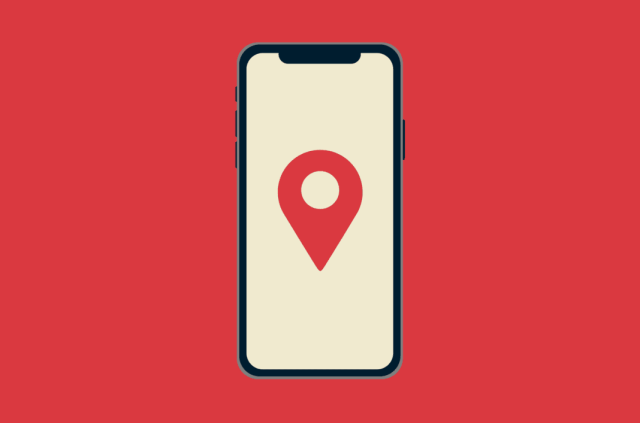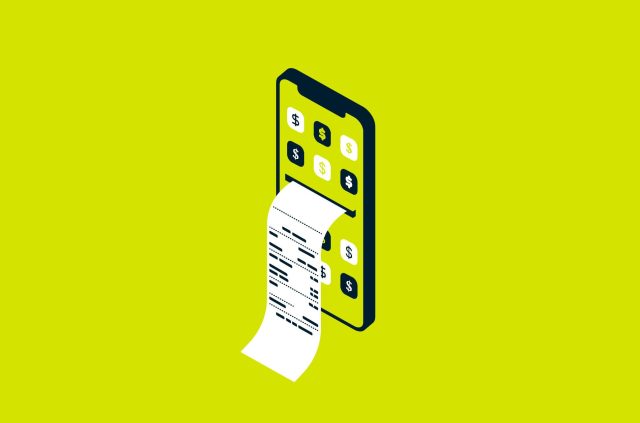What is a digital footprint and how can I manage it?


Think no one’s watching you browse the web? Think again. Every click, search, and social media post leaves behind a digital footprint—a trail of data that companies, advertisers, and even cybercriminals can track. The more you do online, the bigger your internet footprint becomes.
But you don’t have to let it be an open book. Understanding your digital footprint and how to erase it gives you back control over your privacy.
What is a digital footprint?
Digital footprint meaning
Everything you do online leaves a trace. Your digital footprint is the record of your activity—shaped by the websites you visit, the content you engage with, and the data you unknowingly share.
Some of this is harmless, like websites remembering your login details. But other parts, such as extensive tracking cookies and data logs, can be used to monitor your behavior across the web. Companies, advertisers, and even hackers collect this information to build a detailed profile of your habits and preferences. And the more you’re tracked, the less control you have over your privacy.
How digital footprints are created
Your digital footprint expands when you:
- Visit websites—Tracking cookies monitor your activity, remembering what you click, search for, and interact with.
- Use social media—Every like, comment, and share shapes a profile of your interests.
- Shop online—Retailers track your purchases, browsing habits, and even abandoned carts to refine targeted ads.
- Search the web—Search engines log your queries to generate more personalized results.
Use apps and smart devices—Smartphones, fitness trackers, and smart home gadgets constantly collect data, sometimes even after you delete an account. That’s why removing your personal data from online databases is important to limit your exposure.
Types of digital footprints
Not all digital footprints are created equal. Some are shaped by actions you take, others form in the background without you realizing it. Understanding the difference is key to controlling your online presence.
What is an active digital footprint?
An active digital footprint is created when you willingly share information online. Every time you post on social media, leave a comment, or fill out an online form, you add to your digital presence. Signing up for accounts, subscribing to newsletters, and even sending emails also contribute to an active footprint.
Because these actions are intentional, you have more control over what you share. However, once something is online, deleting it isn’t always straightforward. Even if you remove a post or deactivate an account, copies may still exist on servers, in archives, or on other users' devices.
What is a passive digital footprint?
A passive digital footprint is formed without your direct input when websites, apps, and online services collect data about you in the background. This includes details like your IP address, device type, browsing history, and even how long you spend on a webpage.
A passive footprint can also allow websites and advertisers to make inferences about your profile. For example, iPhone users make more purchases than Android users. Facebook users in the U.S. and Canada contribute far more revenue to the company than users in other parts of the world. Such precise insights are highly coveted by marketers and it’s reasonable to expect that we’ll see more data tracking, not less.
Real-world examples of digital footprints
Your digital footprint extends far beyond social media posts and search history. Here are some everyday activities that leave a trail of data behind:
- Emails and messages—Emails include metadata like your IP address, device details, and timestamps.
- Online calendars—Events you schedule, add locations, and invite people are stored and sometimes shared across platforms.
- Digital receipts and shopping history—Every online purchase logs payment details, browsing behavior, and shipping addresses.
- Loyalty programs—Stores link purchases to your account, tracking spending habits and preferences.
- App downloads and usage—Mobile apps collect data on how often you use them, what features you engage with, and even your location.
- Wi-Fi and location tracking—Connecting to public Wi-Fi or enabling location services on your phone allows businesses to monitor movement patterns.
- Streaming and music services—Platforms like Netflix and Spotify track your watch and listen history to refine their algorithms.
- Travel and transportation – Flight itineraries, ride-sharing trips, and even public transport passes log travel history.
- CCTV and facial recognition—Many public and private spaces use surveillance cameras with facial recognition to track identity.
Why does your digital footprint matter?
Cybersecurity risks
Your digital footprint isn’t just a record of your online activity—it’s also a potential target. Hackers, scammers, and cybercriminals use this data to launch phishing attacks, commit identity theft, and even drain financial accounts. The more information you leave exposed, the easier it is for bad actors to exploit.
For example, if you frequently log in from the same location, attackers can use that pattern to bypass security measures. Leaked personal details—like email addresses and phone numbers—can be used for scams or even sold on the dark web, making you a target for fraud.
Online reputation and personal branding
Your digital presence is often the first thing people see when they search for you. Employers, clients, and acquaintances can look up your online history before hiring, collaborating, or connecting. Old social media posts, outdated comments, or past opinions can resurface when you least expect them. Even harmless content can be taken out of context.
Managing your online footprint means staying mindful of what you share, reviewing old accounts, and ensuring your digital history reflects the image you want to project. If something no longer serves you, delete unused online accounts to keep your online presence aligned with how you want to be seen.
Regulatory and legal implications
Your digital footprint is also shaped by the laws governing data privacy. Regulations like the GDPR (General Data Protection Regulation) in Europe and the CCPA (California Consumer Privacy Act) in the U.S. give you more control over personal data. However, companies still collect, store, and sometimes even share a lot of information.
Beyond privacy concerns, certain online actions can carry legal consequences. Sharing copyrighted content, posting defamatory statements, or violating terms of service can result in penalties. Even seemingly harmless activities, like downloading media from unauthorized sources, may put you at risk.
If you’re concerned about what’s out there, you can request the removal of personal details from search engines and online databases.
How to find and analyze your digital footprint?
You might be surprised just how much of your personal information is floating around the internet. Luckily, you can take control by checking what’s out there and managing it.
Checking your Google search results
Your name alone can reveal a lot about your cyber footprint. Try looking up your full name in different search engines and see what comes up. For in-depth results, use targeted searches— “FirstName LastName@” will show email addresses linked to you while “FirstName LastName filetype:pdf” will find documents with your name. Running an image search can also help uncover unexpected photos tied to your identity.
Using online tools to track your digital presence
Certain websites and tools can help you see how much of your data is accessible online. For example, Have I Been Pwned checks if your email has been exposed in a data breach, while people-search websites like PeekYou, FamilyTreeNow, and Radaris compile personal details that may be easily accessible.
For a comprehensive way to protect your personal data, ExpressVPN’s ID Defender scans multiple data broker sites to find where your information is listed. If your details appear, it automates the removal process, reducing exposure and making it harder for third parties to track or exploit your data.
Unlike manual removal, which requires constant monitoring, ID Defender continuously scans and requests removals, keeping your information off data broker lists. This prevents companies from buying, selling, or misusing your private data, providing ongoing protection for your digital identity.
Reviewing social media and app permissions
Social media platforms and apps collect more data than most people realize. Checking your privacy settings ensures you control who can see your posts and personal details. It’s also worth reviewing which apps have access to your contacts, location, and other sensitive data.
Google, for example, tracks your browsing habits to personalize ads. You can view what it assumes about your interests by visiting Google Ad Personalization. If the results surprise you, adjusting your settings can help reduce the amount of data being collected.
How to protect your digital footprint?
Taking control of your digital footprint starts with limiting information others can access. The less data you leave behind, the harder it is for companies, advertisers, and bad actors to track you.
Adjust privacy settings on social media
If your social media accounts are public, anyone can see and even download your posts, photos, and personal details. To minimize your digital footprint, you should adjust:
- Profile visibility to limit who can see your posts.
- Tagging and mentions to prevent unwanted associations.
- Location sharing to avoid broadcasting your whereabouts.
- Ad preferences to limit how platforms use your data for targeted advertising.
- Third-party app access as they may be collecting your data.
- Old posts and shared content to restrict visibility of older content that no longer aligns with your privacy preferences.
Delete old and unused accounts
Dormant accounts are a hidden privacy risk. Even if you haven’t logged in for years, platforms may still store your personal data and continue sharing it with third parties.
However, deleting social media accounts isn’t always as simple as clicking “Delete.” Many platforms intentionally make it difficult, requiring multiple confirmation steps, long waiting periods, or allowing deactivation instead of full deletion.
For example, social media platforms like Telegram and TikTok don’t always make it clear how to permanently delete an account. They may require extra steps, such as entering verification codes or waiting weeks for full removal. If you’re unsure how to wipe your data, follow these step-by-step guides to delete your Telegram account or delete your TikTok account.
Use a VPN to encrypt your internet traffic
A VPN protects your privacy by encrypting your internet traffic, ensuring that advertisers, internet providers, and other third parties can’t monitor or track your online activity. It also hides your real IP address and location, preventing companies from linking your identity to your browsing habits.
ExpressVPN takes this further with private, fast, and reliable connections that keep your digital footprint under control. It uses advanced technology to maintain consistent security without slowing you down. The TrustedServer technology ensures that no data is ever stored, while the high-performance VPN servers allow you to browse freely without exposing your real location.
Be mindful of the information you share online
One of the simplest ways to protect your privacy is to limit the amount of personal information you share. Oversharing on social media, filling out unnecessary online forms, or posting on public forums increases the amount of data for companies to collect, store, and potentially sell.
Keep software and devices updated
Regular software updates improve performance and enhance your security. Many updates include patches that fix vulnerabilities cybercriminals exploit to track users or steal data. For example, Apple’s iOS 14 introduced stricter privacy controls, limiting how apps track user behavior. Running outdated software or using an old operating system may leave your devices exposed to these risks.
Can you completely erase your digital footprint?
Achieving complete online anonymity is nearly impossible. Even if you delete accounts and remove personal details, pieces of your digital footprint may still exist on servers or in data archives. But while you can’t erase everything, you can take steps to significantly reduce your online presence.
The myth of complete anonymity
Deleting social media accounts, using incognito mode, and using privacy-focused browsers can help reduce tracking, but they don’t erase your digital footprint.
Once your information is online, it can be copied, stored, and shared indefinitely. Even if you remove content from public view, traces of your data may still exist in cached pages and archives, data brokers, and even government records.
Even encrypted messaging apps—while offering better privacy—don’t guarantee total anonymity. Service providers may still log metadata, such as who you communicate with and when.
Steps to minimize your digital footprint
While you may not be able to erase everything, you can take concrete steps to reduce your online footprint:
- Remove personal details from Google—If your information appears in search results, you can request its removal. While this won’t delete the original content, it makes it harder for others to find.
- Contact website owners—If you find personal data on a website, you can contact the webmaster and ask to have it deleted. Website owners don’t have to comply, but it’s worth making the request.
- Delete unused accounts and online content—Old social media accounts, blogs, and forum posts contribute to your internet footprint. Deleting them can help reduce the amount of personal information tied to your name.
- Opt out from data brokers—People-search sites often collect and sell personal information without your consent. Removing yourself from these databases can be time-consuming, as they frequently relist data. ExpressVPN’s Data Removal service automates the process by scanning and requesting takedowns from major data brokers.
Legal rights and data removal requests
Depending on where you live, data privacy laws may give you the right to request the deletion of your personal information. The General Data Protection Regulation (GDPR) in the EU and the California Consumer Privacy Act (CCPA) in the U.S. allow individuals to demand that companies erase their data. However, enforcement varies, and not all requests are honored.
In some cases, data removal is a legal right—in others, it depends on the policies of website owners and platforms. That’s why taking proactive steps to protect your digital footprint is essential.
Tools and resources for managing your digital footprint
Staying in control of your digital footprint doesn’t have to be overwhelming. With the right tools, you can monitor your online presence, remove personal data, and strengthen your privacy.
Best free and paid digital privacy tools
A variety of tools can help you track, clean up, and protect your cyber footprint. Here are some of the most effective options:
- ExpressVPN—Encrypts your internet traffic and hides your real IP address, preventing websites, advertisers, and hackers from tracking you.
- ExpressVPN’s Data Removal Service—Scans data broker sites for your personal information and automates removal requests, helping you take back control of your privacy.
- JustDelete.me—A directory of direct links to account deletion pages for hundreds of websites, making it easier to remove old accounts.
- Have I Been Pwned—Checks if your email address or passwords have been exposed in a data breach.
- Google Ad Personalization Settings allows you to see what Google knows about you and adjust your ad preferences to limit tracking.
- Tor Browser—A privacy-focused browser that routes your traffic through multiple encrypted relays, making it harder to track your online activity.
- uBlock Origin—A powerful open-source ad blocker that also prevents tracking scripts from running on websites.
- DuckDuckGo—A search engine that does not track searches or store personal information.
- Brave Browser—A privacy-focused browser with built-in ad and tracker blocking and support for Tor-based private browsing.
Recommended reading and guides
If you want to dive deeper into digital privacy, check out these detailed posts on data privacy, online security, and reducing your online exposure:
- How Your Digital Footprint Can Impact Your Life—Learn how every online interaction leaves a trace and what that means for your privacy, security, and reputation.
- How to Delete Yourself from the Internet—A step-by-step guide to removing personal data from search engines, data brokers, and online accounts.
- What Is Metadata and How Does It Affect Your Privacy?—Find out how metadata reveals more about you than you think.
- How to Delete Online Accounts You No Longer Use—A practical guide to finding and permanently deleting old or inactive accounts.
- How Reputation Management Services Can Rein in Your Online Data—Discover how third-party services help remove unwanted personal information from the web.
By exploring these resources, you can stay informed about digital privacy, take proactive steps to reduce your online footprint, and learn how to protect your personal data from unwanted tracking and exposure.
FAQ: Understanding digital footprint
What are the risks of having a large digital footprint?
How can I hide my online activity from advertisers?
Is it possible to be completely anonymous online?
How can businesses manage their digital footprints?
How do I delete 99.9% of my digital footprint?
Who can see my digital footprint?
Even private browsing doesn’t fully hide you—your internet provider and many websites still track your activity. Some data is even stored permanently in online archives.
Why is your digital footprint important?
A messy digital history can affect job opportunities, increase spam calls, or even put you at risk of identity theft. But by keeping tabs on your internet footprint, using secure browsing tools, and removing unnecessary accounts, you stay in control of your digital identity—not the other way around.
Take the first step to protect yourself online. Try ExpressVPN risk-free.
Get ExpressVPN














